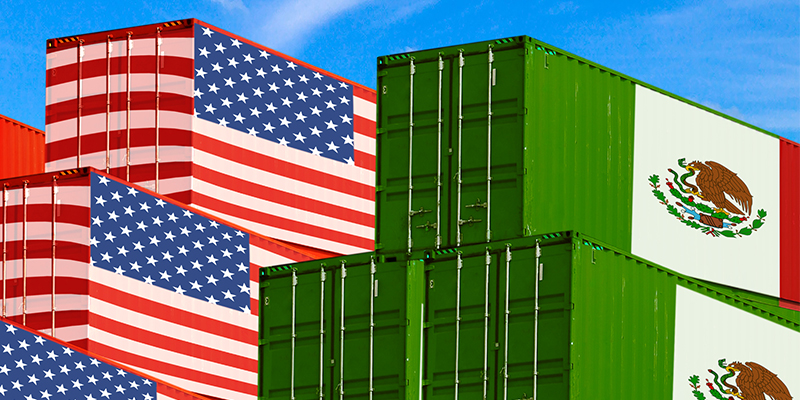The industrial space market, along with the broad macroeconomy in the U.S., received a new jolt of uncertainty with President Donald Trump’s recent announcement of tariffs of up to 25% on goods imported from Mexico. These tariffs, if actually implemented, would represent a new front in global trade wars which have been recently escalating with China and others. Mexico is a very significant trade partner with imports totaling $371.9 billion and exports $299.1 billion in 2018 alone; this makes Mexico our third-largest trading partner and second-largest market for exported U.S. goods. Further, much of the U.S.-Mexican trade includes partially finished goods and component parts that are part of critical supply chains such as those in U.S. automotive production.
As such, the impact of a sustained bilateral trade war between the U.S. and Mexico could be uniquely devastating to both economies and especially to the U.S. industrial space markets. First, inland port markets, such as those in California and Texas, could be directly impacted by lowered volume of goods moving by truck and rail. Second, manufacturing and distribution markets in areas of high levels of U.S. manufacturing activity, such as Ohio and Tennessee, could be impacted by reduced orders as U.S. producers react to price increases of raw materials and components as well as lagging demand for exports. Finally, the vast network of distribution centers supporting retail and e-commerce could be affected by lower demand for goods given an economic slowdown and increased prices on all goods. In sum, such a trade war could easily tip the U.S. into recession.
Given the risks and near certainty of mutually assured destruction, it is easy to see why many market participants are betting against an actual all-out trade war. Still, the near-term uncertainty may cause a pause in industrial leasing activity as firm leaders wait for clarity; this is a particular risk for markets that directly facilitate U.S.-Mexican trade. The silver lining is that there is actually a positive probability that the U.S. will negotiate new trade agreements with China, Mexico, Canada, the European Union and others. While details are still mostly speculative, it is likely that Trump will insist on terms that make U.S. goods export easier and foreign markets more open. When this could occur is very difficult to determine. As such, investors and developers in the industrial market should take a measured response to the geopolitical whims making headlines today. Risks are undoubtedly higher, but may be short-lived, and thus long-term investment may still be the optimal strategy.
In the short term, the increased risk and uncertainty has lowered long-term interest rates. Thus, an immediate strategy may be refinancing long-term debts at rates more favorable than available for over a year. Further, lower interest rates will help keep cap rates low and cause more investors to preference stable cash flowing real estate over increasingly volatile stock equities.














